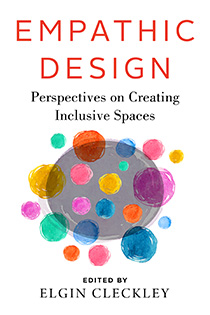Overview
Join UVA’s Lifetime Learning and the School of Architecture to learn about the intersection of design and community engagement, supporting the untold stories of marginalized communities and the histories of our public spaces, especially in the American South. School of Architecture’s faculty experts will lead this discussion: C.L. Bohannon, Associate Dean of Justice, Equity, Diversity and Inclusion and Associate Professor of Landscape Architecture; and Elgin Cleckley (BS ARCH ’93), Assistant Professor of Architecture, Education + Health, Undergraduate Program Director, Director of Design Thinking, and past Director of Design Justice at UVA’s Equity Center. UVA School of Architecture’s Dean, Malo A. Hutson, will set the stage for this engaging conversation.
This program is a partnership with the School of Architecture.
Speaker Biographies
C.L. Bohannon, is an Associate Professor in the Landscape Architecture Department and the Associate Dean of Justice, Equity, Diversity and Inclusion (AD JEDI). Bohannon is a nationally recognized scholar and educator in the areas of community-engaged design and pedagogy, social and environmental justice, and African American landscapes, especially in the American South.
Elgin Cleckley, Elgin Cleckley is an Assistant Professor in UVA’s School of Architecture with an appointment at the Curry School of Education and the School of Nursing. He is a designer, director, and principal of _mpathic design – a design thinking pedagogy, initiative, and professional practice focusing on intersections of identity, culture, history, memory, and place.
Malo André Hutson, Dean and Edward E. Elson Professor at the University of Virginia’s School of Architecture. He is a nationally and internationally recognized expert in community development, climate resilience, environmental justice, and urban health. As a scholar, teacher, and practitioner, he focuses on the nexus of environmental, architectural, and urban equity practices. He is the recipient of numerous awards and fellowships, including the Salzburg Global Fellowship, two Mellon Fellowships, and a Robert Wood Johnson Foundation Health & Scholar Fellowship, among others.

